-
 Bitcoin
Bitcoin $76,444.7530
-3.77% -
 Ethereum
Ethereum $1,473.8355
-5.46% -
 Tether USDt
Tether USDt $0.9991
-0.08% -
 XRP
XRP $1.7965
-5.51% -
 BNB
BNB $553.4919
-0.36% -
 USDC
USDC $0.9999
-0.02% -
 Solana
Solana $105.2981
-1.74% -
 TRON
TRON $0.2303
0.81% -
 Dogecoin
Dogecoin $0.1422
-4.62% -
 Cardano
Cardano $0.5587
-4.41% -
 UNUS SED LEO
UNUS SED LEO $8.9866
1.01% -
 Toncoin
Toncoin $2.9933
-4.74% -
 Chainlink
Chainlink $10.9113
-4.81% -
 Stellar
Stellar $0.2215
-4.76% -
 Avalanche
Avalanche $16.1163
-3.29% -
 Sui
Sui $1.9371
-3.89% -
 Shiba Inu
Shiba Inu $0.0...01065
-6.69% -
 Hedera
Hedera $0.1469
-3.29% -
 MANTRA
MANTRA $6.2058
-1.53% -
 Dai
Dai $1.0000
0.01% -
 Bitcoin Cash
Bitcoin Cash $269.3457
-2.08% -
 Polkadot
Polkadot $3.3773
-5.87% -
 Litecoin
Litecoin $69.2204
-2.50% -
 Ethena USDe
Ethena USDe $0.9986
-0.01% -
 Bitget Token
Bitget Token $4.0180
-3.25% -
 Pi
Pi $0.5649
-4.50% -
 Hyperliquid
Hyperliquid $11.1928
-2.80% -
 Monero
Monero $195.3885
-4.41% -
 OKB
OKB $50.9235
-0.59% -
 Uniswap
Uniswap $4.7688
-6.95%
What role does mining play in blockchain?
Blockchain mining secures the network by verifying transactions, solving cryptographic puzzles, and adding new blocks. Miners are rewarded with cryptocurrency, incentivizing network security and decentralization, though energy consumption varies by consensus mechanism.
Mar 20, 2025 at 03:57 am
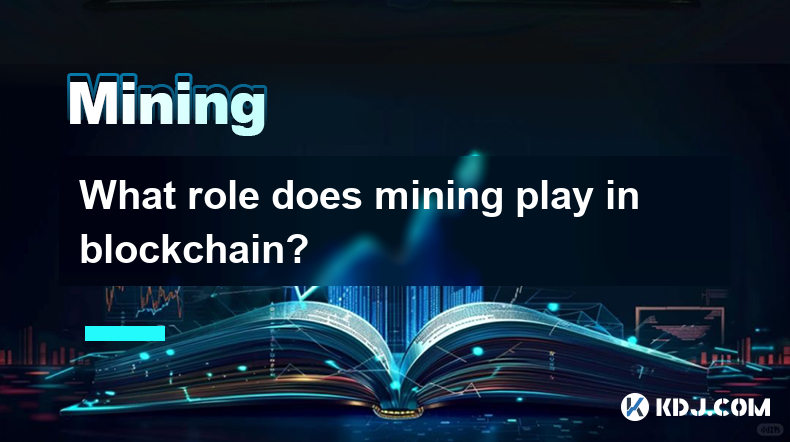
Key Points:
- Mining secures the blockchain network by verifying and adding new transactions to the blockchain.
- The mining process consumes computational power to solve complex cryptographic puzzles.
- Miners are rewarded with newly minted cryptocurrency for their efforts in securing the network.
- Different consensus mechanisms employ various mining methods, impacting energy consumption and decentralization.
- The role of mining is crucial for maintaining the integrity and security of the blockchain.
What Role Does Mining Play in Blockchain?
Mining is a fundamental process in many blockchain networks, acting as the backbone of their security and functionality. It's the mechanism that allows for the creation of new blocks of transactions and their addition to the existing blockchain. This process is crucial for maintaining the integrity and security of the entire system. Without mining, the blockchain would be vulnerable to manipulation and attacks.
The primary role of mining is to verify transactions. Before a transaction is added to the blockchain, it must be validated. Miners use powerful computers to solve complex cryptographic puzzles. The first miner to solve the puzzle gets to add the next block of verified transactions to the blockchain. This process ensures that only legitimate transactions are recorded.
This validation process is what secures the blockchain. Altering past transactions would require recalculating the cryptographic hashes for every subsequent block, an incredibly computationally intensive task. This makes fraudulent activity extremely difficult and impractical.
The reward for this computational effort is usually a portion of newly minted cryptocurrency. This incentive system encourages miners to participate in the network, ensuring its continued operation and security. The amount of cryptocurrency awarded for successfully mining a block varies depending on the specific blockchain and its algorithm.
The method of mining, however, varies depending on the blockchain's consensus mechanism. Proof-of-Work (PoW) is the most common, requiring significant computational power to solve complex mathematical problems. Proof-of-Stake (PoS), on the other hand, involves validators staking their cryptocurrency to participate in the consensus process, generally consuming less energy than PoW.
The energy consumption associated with mining is a significant concern, particularly with PoW algorithms. The intense computational demands lead to high electricity usage, raising environmental questions. This has led to the exploration and adoption of alternative consensus mechanisms, like PoS, that are more energy-efficient.
Beyond transaction verification and reward generation, mining contributes to the decentralization of the blockchain network. A large number of geographically dispersed miners prevents any single entity from controlling the network. This distributed nature enhances the resilience and security of the blockchain. A centralized system, conversely, would be vulnerable to single points of failure and manipulation.
The computational power required for mining also affects the network's security. A larger and more powerful mining network makes it significantly harder for malicious actors to attempt a 51% attack, where a single entity controls more than half of the network's hashing power.
The complexity of the cryptographic puzzles involved in mining is carefully designed and adjusted to maintain a consistent block creation rate. This rate, also known as block time, is a crucial parameter in the blockchain's performance. Adjustments to the difficulty of the puzzles are made automatically to keep the block time within the desired range.
Mining pools are also a key aspect of the mining landscape. These pools allow individual miners to combine their computational power, increasing their chances of successfully mining a block and sharing the reward accordingly. This helps smaller miners to participate and contribute to the network's security.
The development of specialized hardware, like ASICs (Application-Specific Integrated Circuits), has significantly impacted mining. These chips are designed specifically for cryptocurrency mining and offer significantly higher hashing power compared to general-purpose CPUs or GPUs. This has led to a more centralized mining landscape, although decentralized alternatives remain.
Furthermore, the regulatory landscape surrounding cryptocurrency mining is constantly evolving. Governments worldwide are grappling with the environmental impact and potential for illicit activities associated with mining. This leads to varying regulations and policies impacting the mining industry.
Frequently Asked Questions:
Q: What is Proof-of-Work (PoW)?
A: PoW is a consensus mechanism that requires miners to solve computationally intensive cryptographic puzzles to validate transactions and add new blocks to the blockchain. The first miner to solve the puzzle is rewarded with cryptocurrency.
Q: What is Proof-of-Stake (PoS)?
A: PoS is an alternative consensus mechanism where validators "stake" their cryptocurrency to participate in the validation process. The right to validate transactions and create new blocks is assigned probabilistically based on the amount of staked cryptocurrency. This is generally more energy-efficient than PoW.
Q: What are mining pools?
A: Mining pools are groups of miners who combine their computational power to increase their chances of successfully mining a block and share the rewards proportionally. This allows smaller miners to participate effectively.
Q: What are ASICs?
A: ASICs are Application-Specific Integrated Circuits, specialized hardware designed for cryptocurrency mining. They offer significantly higher hashing power compared to general-purpose hardware like CPUs and GPUs.
Q: What is the environmental impact of cryptocurrency mining?
A: The high energy consumption of PoW-based mining is a significant environmental concern. The electricity used to power mining operations contributes to greenhouse gas emissions. PoS and other energy-efficient consensus mechanisms aim to mitigate this issue.
Disclaimer:info@kdj.com
The information provided is not trading advice. kdj.com does not assume any responsibility for any investments made based on the information provided in this article. Cryptocurrencies are highly volatile and it is highly recommended that you invest with caution after thorough research!
If you believe that the content used on this website infringes your copyright, please contact us immediately (info@kdj.com) and we will delete it promptly.
- "Cardano (ADA) Price Could Dip Below $0.60, Following Previous Market Cycle"
- 2025-04-09 05:10:12
- BONK, the well-known meme coin, has risen over 35% in the last week, attracting meme coin investors in the market. So, what caused this rally?
- 2025-04-09 05:10:12
- Bitcoin (BTC) Investors May Not Exactly Feel It, but BTC Has Been a Relatively Good Bet
- 2025-04-09 05:05:12
- Donald's Bitcoin (DONBTC) Could Turn Early Investors into Multi-Millionaires, Like Shiba Inu (SHIB) and Dogecoin (DOGE) Did
- 2025-04-09 05:05:12
- 6 Upcoming Kraken Listings That Could Be the Next Big Thing in Crypto
- 2025-04-09 05:00:13
- COTI Unveils New Privacy-Focused Blockchain to Reshape Web3 Transactions
- 2025-04-09 05:00:13
Related knowledge
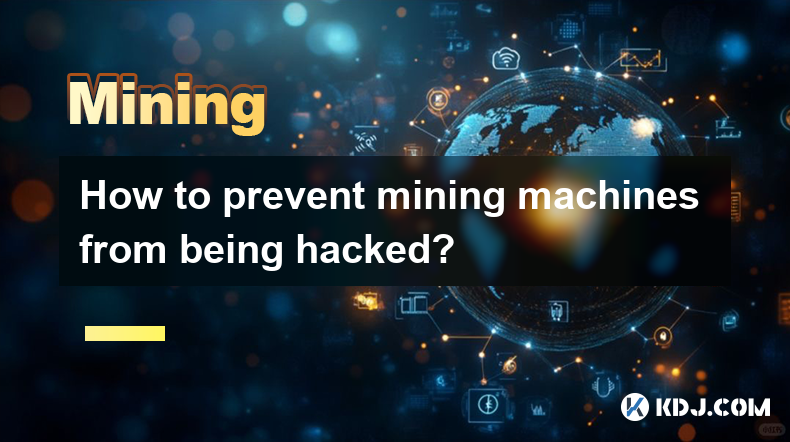
How to prevent mining machines from being hacked?
Apr 08,2025 at 09:00pm
In the world of cryptocurrency, mining machines play a crucial role in securing networks and validating transactions. However, these machines are also prime targets for hackers looking to exploit vulnerabilities for financial gain. Preventing mining machines from being hacked requires a multi-faceted approach that includes robust security measures, regu...
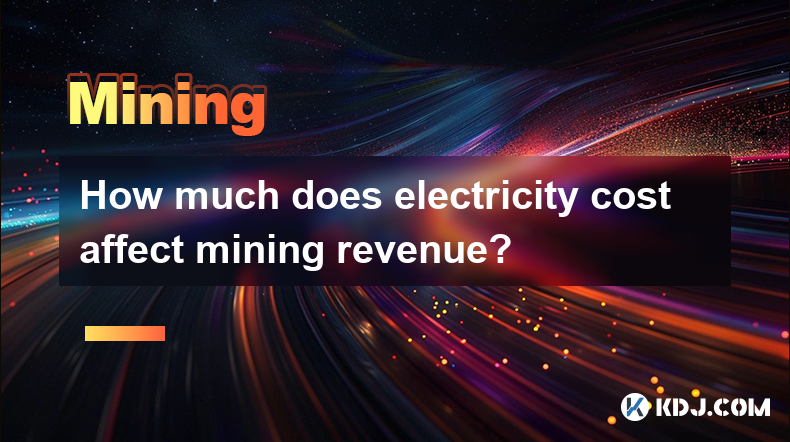
How much does electricity cost affect mining revenue?
Apr 08,2025 at 05:29pm
The cost of electricity plays a crucial role in determining the profitability of cryptocurrency mining. Mining revenue is directly impacted by the expenses incurred in running mining equipment, with electricity costs often being the most significant operational expense. Understanding how electricity costs affect mining revenue is essential for miners lo...
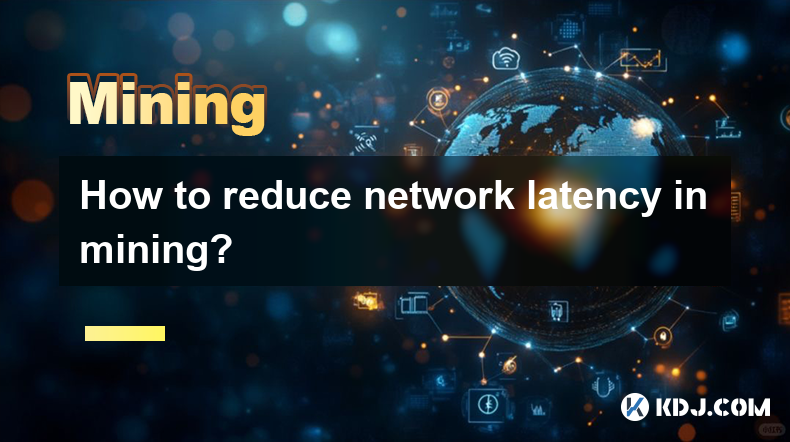
How to reduce network latency in mining?
Apr 09,2025 at 02:28am
Understanding Network Latency in MiningNetwork latency is a critical factor in the world of cryptocurrency mining. It refers to the time it takes for data to travel from its source to its destination across a network. In mining, lower latency can mean the difference between successfully adding a block to the blockchain and missing out on the reward. Red...
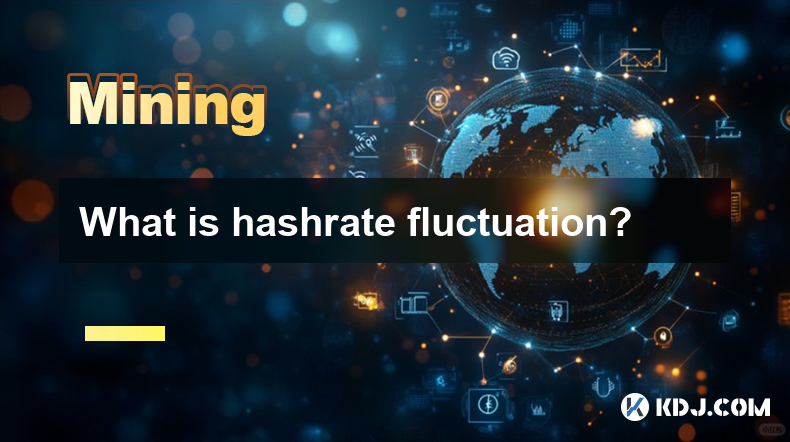
What is hashrate fluctuation?
Apr 08,2025 at 08:08pm
Hashrate fluctuation refers to the changes in the total computational power used by miners to process transactions and secure the blockchain network. This metric is crucial in the cryptocurrency world, particularly for networks like Bitcoin, Ethereum, and others that rely on proof-of-work (PoW) consensus mechanisms. Understanding hashrate fluctuation is...

Why does mining require a full node?
Apr 08,2025 at 06:49pm
Mining in the cryptocurrency world is a complex process that involves verifying transactions and adding them to the blockchain. One of the key components required for mining is a full node. But why is a full node necessary for mining? Let's delve into the reasons and explore the intricacies of this requirement. What is a Full Node?A full node is a progr...
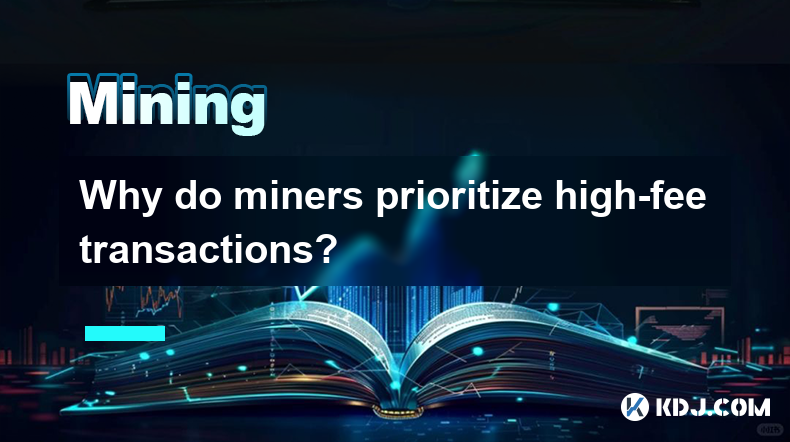
Why do miners prioritize high-fee transactions?
Apr 08,2025 at 05:01pm
Miners in the cryptocurrency ecosystem, particularly in networks like Bitcoin, play a crucial role in validating and adding transactions to the blockchain. One of the key factors that influence their decision-making process is the transaction fee associated with each transaction. Miners prioritize high-fee transactions primarily because these fees direc...

How to prevent mining machines from being hacked?
Apr 08,2025 at 09:00pm
In the world of cryptocurrency, mining machines play a crucial role in securing networks and validating transactions. However, these machines are also prime targets for hackers looking to exploit vulnerabilities for financial gain. Preventing mining machines from being hacked requires a multi-faceted approach that includes robust security measures, regu...

How much does electricity cost affect mining revenue?
Apr 08,2025 at 05:29pm
The cost of electricity plays a crucial role in determining the profitability of cryptocurrency mining. Mining revenue is directly impacted by the expenses incurred in running mining equipment, with electricity costs often being the most significant operational expense. Understanding how electricity costs affect mining revenue is essential for miners lo...

How to reduce network latency in mining?
Apr 09,2025 at 02:28am
Understanding Network Latency in MiningNetwork latency is a critical factor in the world of cryptocurrency mining. It refers to the time it takes for data to travel from its source to its destination across a network. In mining, lower latency can mean the difference between successfully adding a block to the blockchain and missing out on the reward. Red...

What is hashrate fluctuation?
Apr 08,2025 at 08:08pm
Hashrate fluctuation refers to the changes in the total computational power used by miners to process transactions and secure the blockchain network. This metric is crucial in the cryptocurrency world, particularly for networks like Bitcoin, Ethereum, and others that rely on proof-of-work (PoW) consensus mechanisms. Understanding hashrate fluctuation is...

Why does mining require a full node?
Apr 08,2025 at 06:49pm
Mining in the cryptocurrency world is a complex process that involves verifying transactions and adding them to the blockchain. One of the key components required for mining is a full node. But why is a full node necessary for mining? Let's delve into the reasons and explore the intricacies of this requirement. What is a Full Node?A full node is a progr...

Why do miners prioritize high-fee transactions?
Apr 08,2025 at 05:01pm
Miners in the cryptocurrency ecosystem, particularly in networks like Bitcoin, play a crucial role in validating and adding transactions to the blockchain. One of the key factors that influence their decision-making process is the transaction fee associated with each transaction. Miners prioritize high-fee transactions primarily because these fees direc...
See all articles






















































































